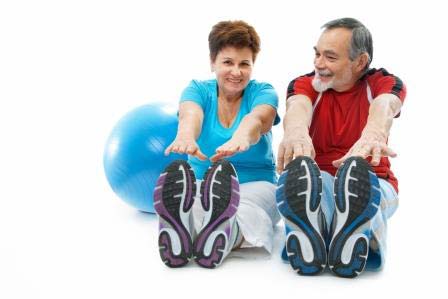Healthy muscles are powerful but perhaps, just as important, they are also flexible. Muscles require regular work to maintain strength and even more work to gain strength. Similarly, muscle flexibility requires consistent stretching to maintain and even more frequency to make gains.
The tissues of the body naturally shorten over time unless the process is interrupted. This is called adaptive shortening. The most dramatic example of this is someone bedridden, or loss of mobility after being in a cast or immobilized for a time. The joints and muscles become more restricted in their mobility the longer the tissues are not lengthened or moved through their available motion. We tend to maintain our mobility specific to the activities we participate in. For example a tennis player may have great shoulder mobility, a runner – good hamstring mobility. But we can easily get adaptive shortening in those muscles and joints that we do not regularly take through their full available range of motion. This can lead to injury or pain. Our daily activities, including sports, only maintain part of our flexibility. For example imagine an elderly person who, even upon standing, assumes the sitting posture of their favorite chair.
So what does it take to gain flexibility, and once you have it, how do you keep it? Should you hold a stretch for 30 seconds, 2 minutes, or what is the ideal time? And for goodness sake, when should you stretch?! Upon getting out of bed, before or after exercise, daily, weekly?
Several studies have shown benefit from a variety of stretching regimes. One thing they all have in common is frequency and consistency. Meaning – the more often you stretch, the better. Some studies show improvement with holding a stretch position for a 30 second hold 1-2x/day; while others have shown a 10 second hold with 5 repetitions to work. Active, or dynamic, stretching also yields results with regular effort. Active stretching uses antagonist muscles (the opposite muscle) to help take a targeted muscle into stretch range. For example stretching your hamstrings in sitting by actively straightening the knee, or stretching your pectorals by pushing your arm into the floor while rotating your trunk the opposite way, or contracting your gluteals while performing a quad or hip flexor stretch. Active stretches are great because they help to strengthen and re-educate the antagonist muscle, while relaxing the muscle you are trying to stretch. Bouncing into a stretch has not been shown to be as beneficial because it causes a reflex contraction of the muscle you are trying to stretch. Typically, a variety of types of movement and stretches to improve your mobility and flexibility is best. There is no magic number of repetitions, or hold times; the key is to work at it often.
When performing a stretch, it should feel like tension on the muscle, a mild pull or burn – it should not hurt and it should not feel electrical or “nervy”. If we consider a scale of stretching intensity of 1-10 (10 being intense), you should stretch at a level of 3-4. There should not be muscle or joint pain elicited elsewhere in the body either. For example, tolerating ankle pain while stretching your calf muscles is not recommended.
You should feel the stretch in the muscle you are targeting to stretch – so it depends on how specific your stretch is. If you are standing and reach down to touch your toes you may feel the stretch in your neck or upper back, low back, buttocks, hamstrings or calves. That’s because you are stretching all of these muscles. If you are lying down doing a straight leg raise hamstring stretch – you should feel it in your hamstring and calf. Generally, it is better to stretch individual muscle groups before stretching a large number of muscles, or body segments at the same time.
Changes in mobility and flexibility take time. You should notice small consistent gains, but may take months to truly see big changes. While it is important to maintain and improve our flexibility, it is also important not too overstretch a muscle or joint. More is not always better! We get the biggest response to stretching when our muscles are “warm”. So typically it is better to stretch after some walking or other activity to warm up. It is certainly fine to stretch without warming up first, you just may not see as much immediate improvement.
If your efforts are consistent and frequent for more than a month or two and you truly see no gains, consult your trainer or physical therapist. Sometimes the issue isn’t really muscle flexibility but a compensation for a bigger problem.
Thank you to Shawn Babcock, PT at Mountain Physical Therapy for contributing to our newsletter.


